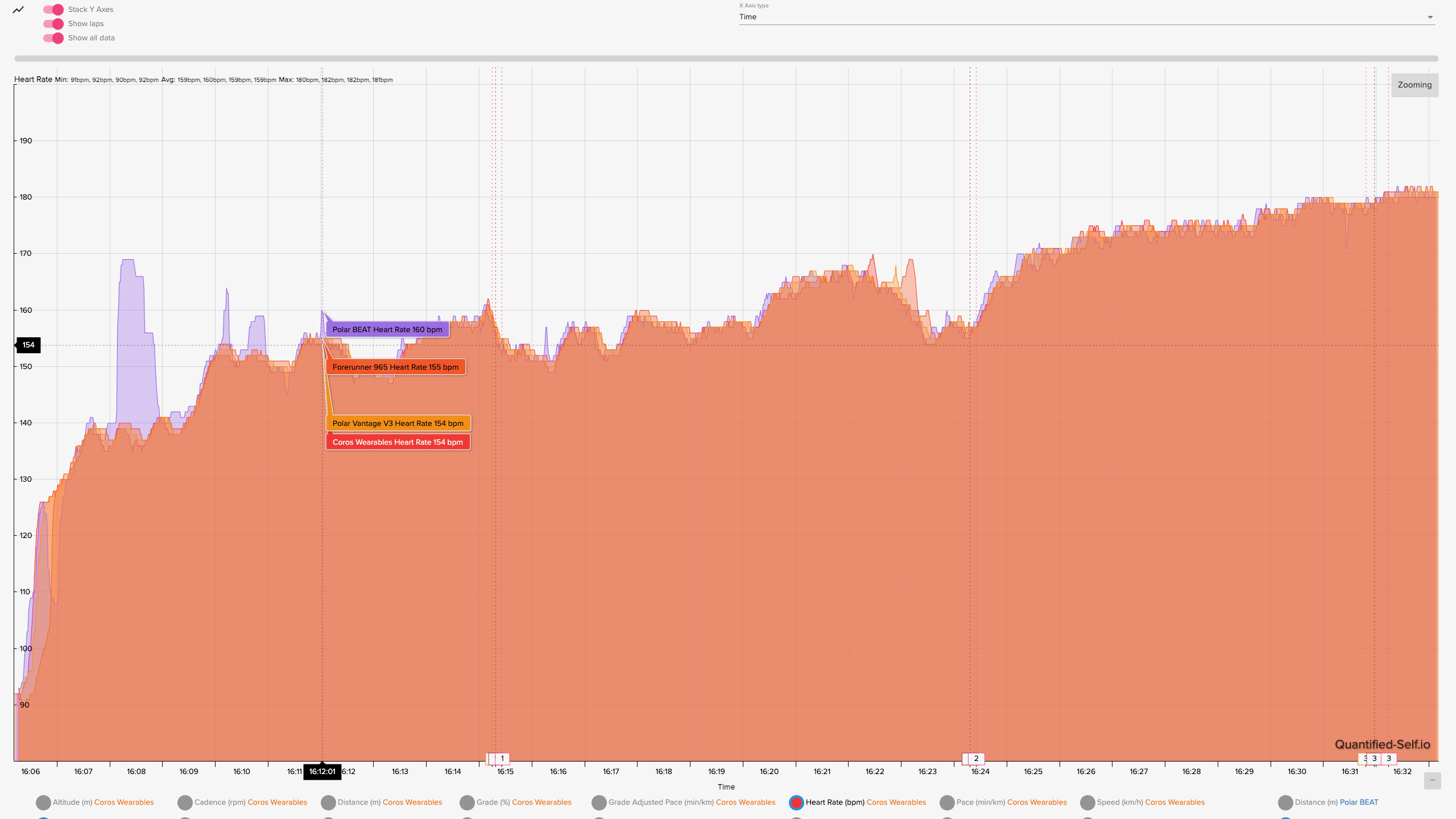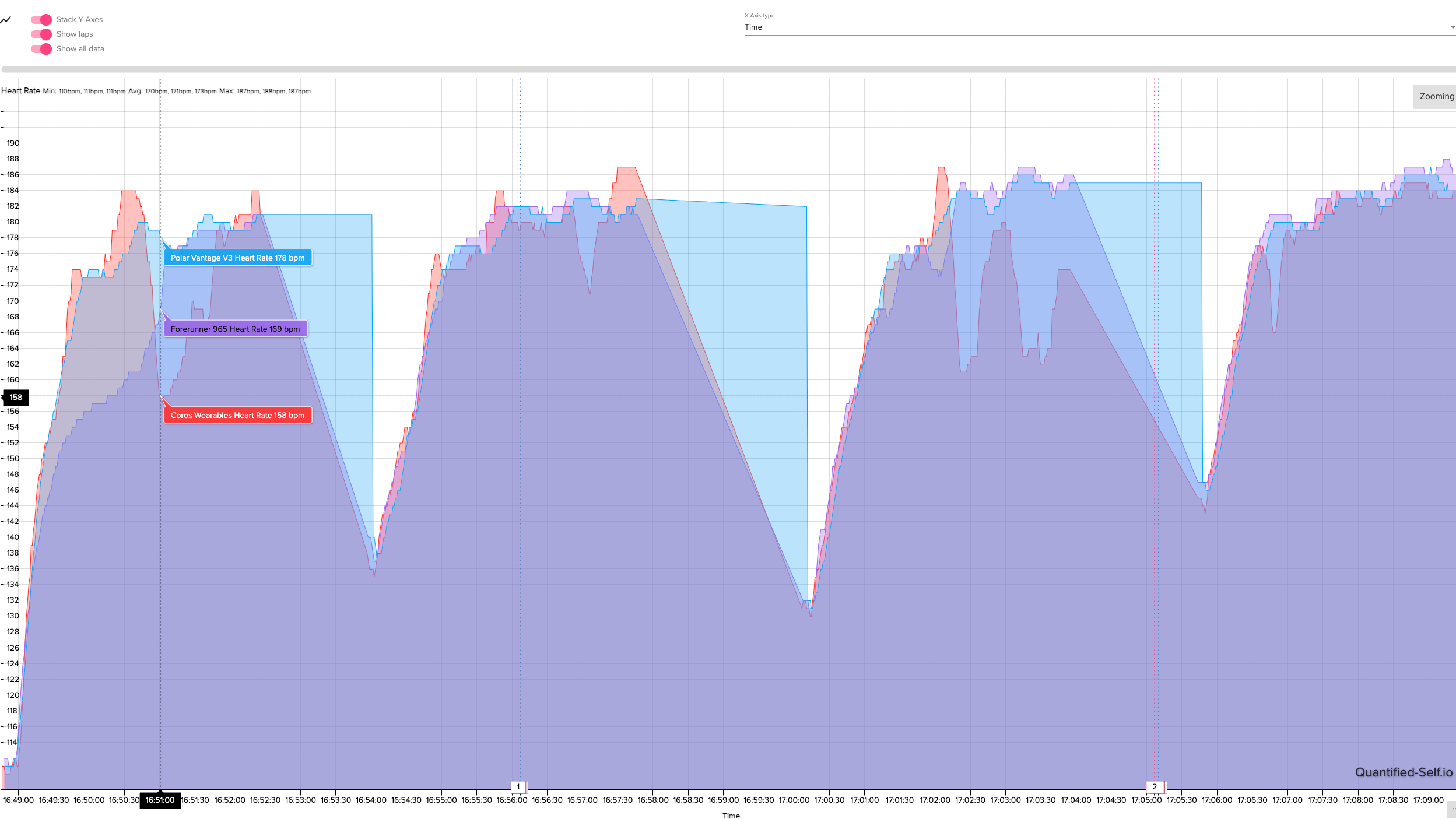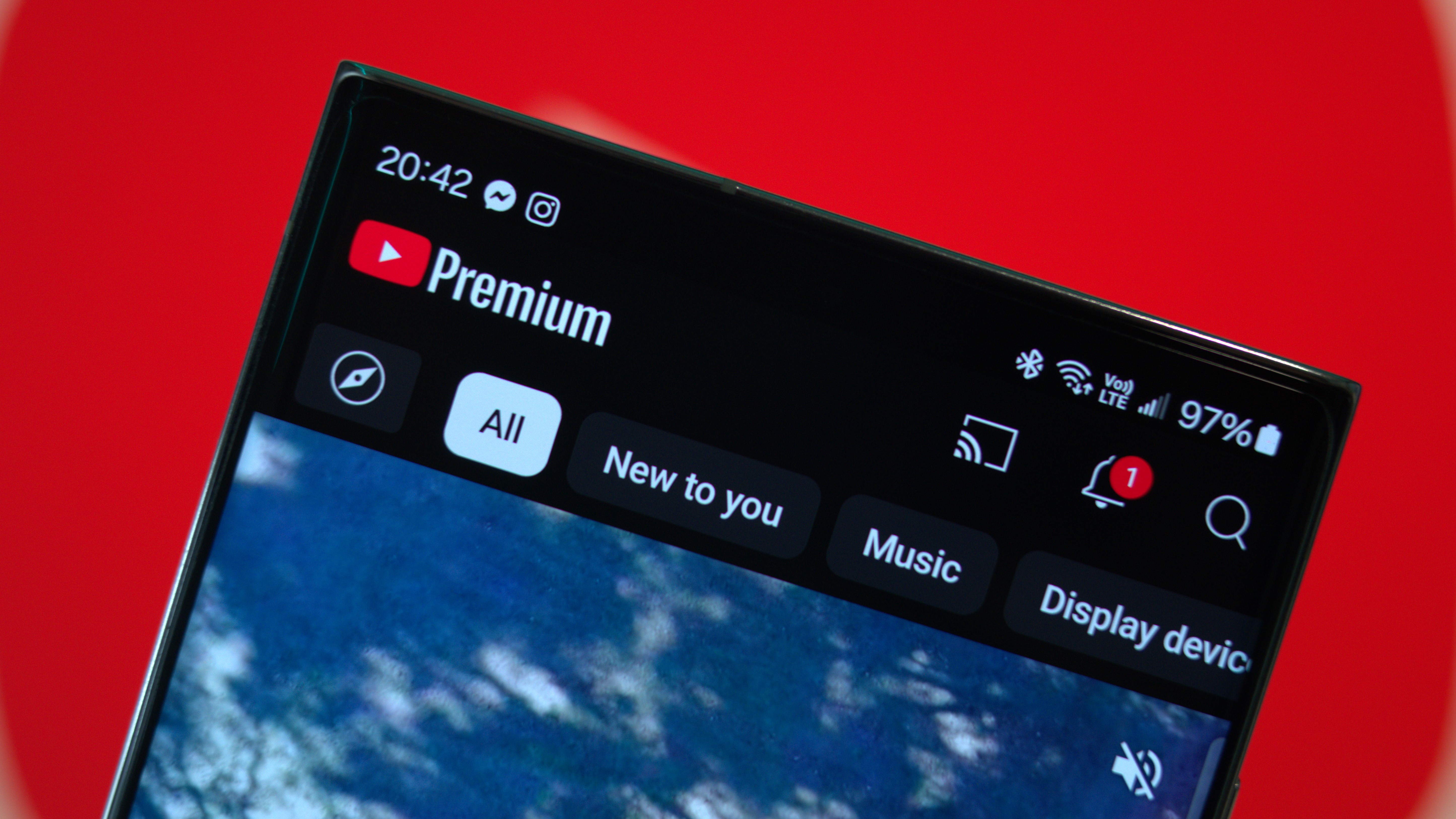Coros vs. Garmin vs. Polar fitness test: How the new Vertix 2S compares to the Forerunner 965 and Vantage V3
COROS' new watch has a revamped GPS antenna and HR sensors; I tested them against two flagship fitness watches for accuracy.
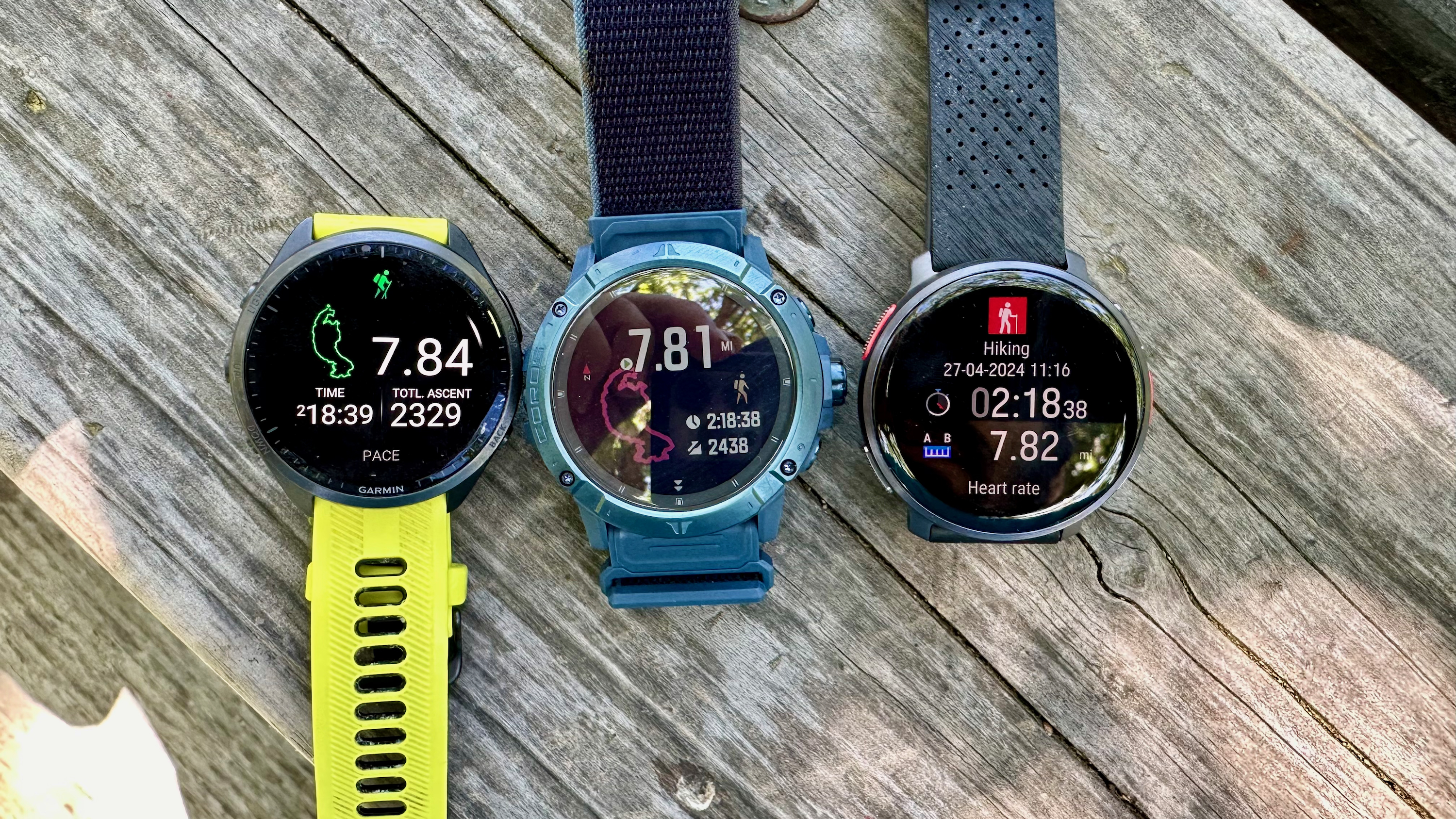

In this weekly column, Android Central Wearables Editor Michael Hicks talks about the world of wearables, apps, and fitness tech related to running and health, in his quest to get faster and more fit.
Over the past week, I've pitted the new COROS VERTIX 2S against two other flagship fitness watches—the Garmin Forerunner 965 and Polar Vantage V3—to see how they compare in terms of GPS, heart rate, and elevation accuracy.
COROS gave the VERTIX 2S two key upgrades: a new satellite antenna for better "positioning accuracy in dense city/mountain environments" and an upgraded optical heart rate monitor with more LEDs. Since those are the only major differences from the 2021 VERTIX 2, I decided to test how improved they really are.
I've used the Forerunner 965 as my primary running watch for the last year and as a benchmark for other watch reviews. As for the Polar Vantage V3, my first model crashed during long workouts, delaying my review until Polar could send a replacement. The substitute hasn't had any issues, but I was curious whether it could match the others for accuracy and overcome my bad first impression.
Without any further preamble, let's dive into the Coros vs. Garmin vs. Polar fitness test accuracy results for the best fitness watches that COROS, Garmin, and Polar offer!
Coros vs. Garmin vs. Polar: GPS and elevation accuracy
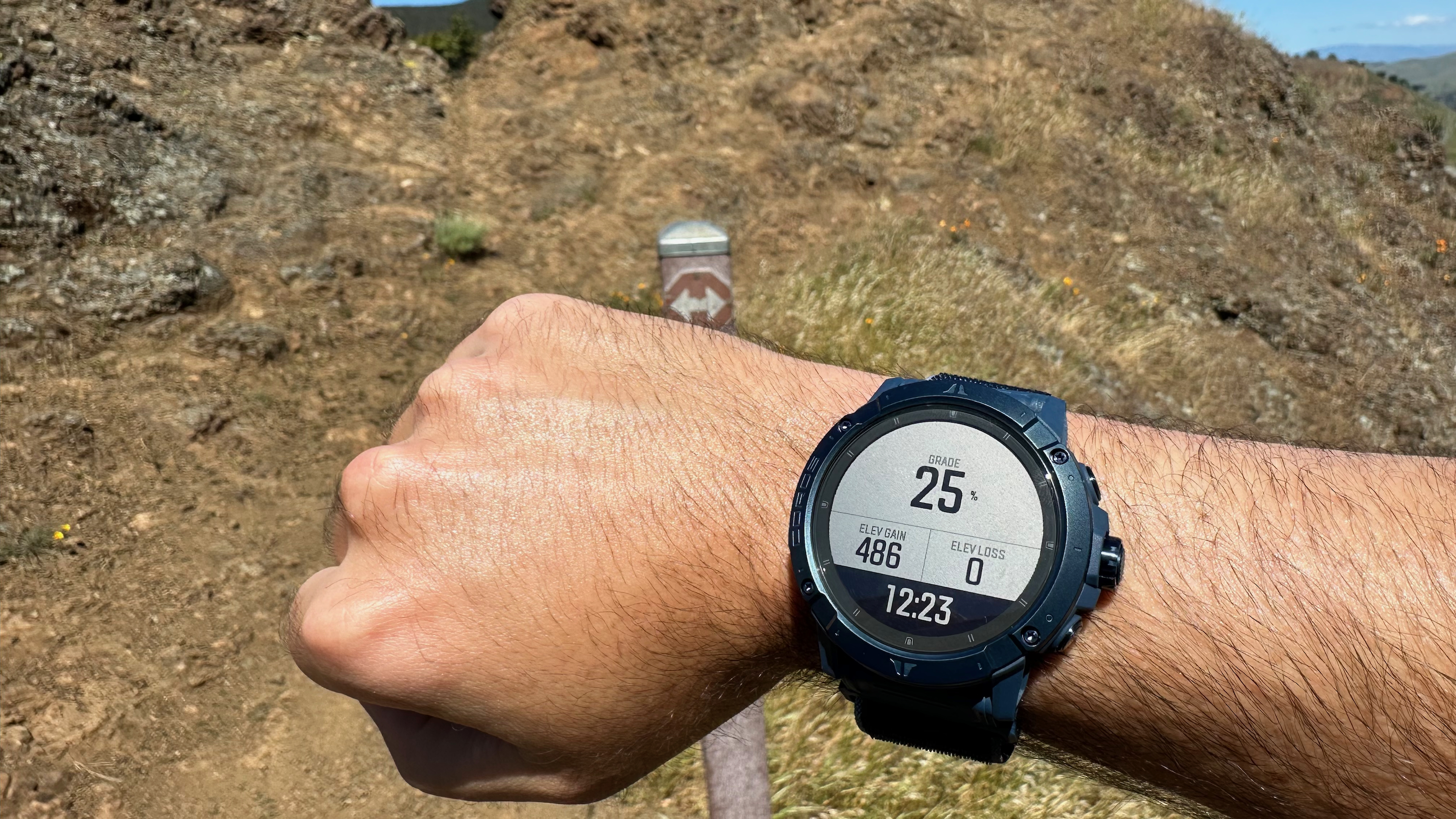
For this test, I wore all three fitness watches for a 5K urban run, a 2-mile track sprint workout, and an eight-mile hike on Mount Diablo trails with steep climbs and dense foliage. Here are the results, starting with the 5K run:
- COROS VERTIX 2S: 3.19 miles, 8:27/mi pace, 318W power, 167 cadence
- Garmin Forerunner 965: 3.16 miles, 8:31/mi pace, 406W power, 166 cadence
- Polar Vantage V3: 3.12 miles, 8:37/mi pace, 384W, 168 cadence
Before analyzing this, let's look at the GPS map. The slideshow below shows a few key close-ups of how COROS (orange), Garmin (brown), and Polar (pink) performed:
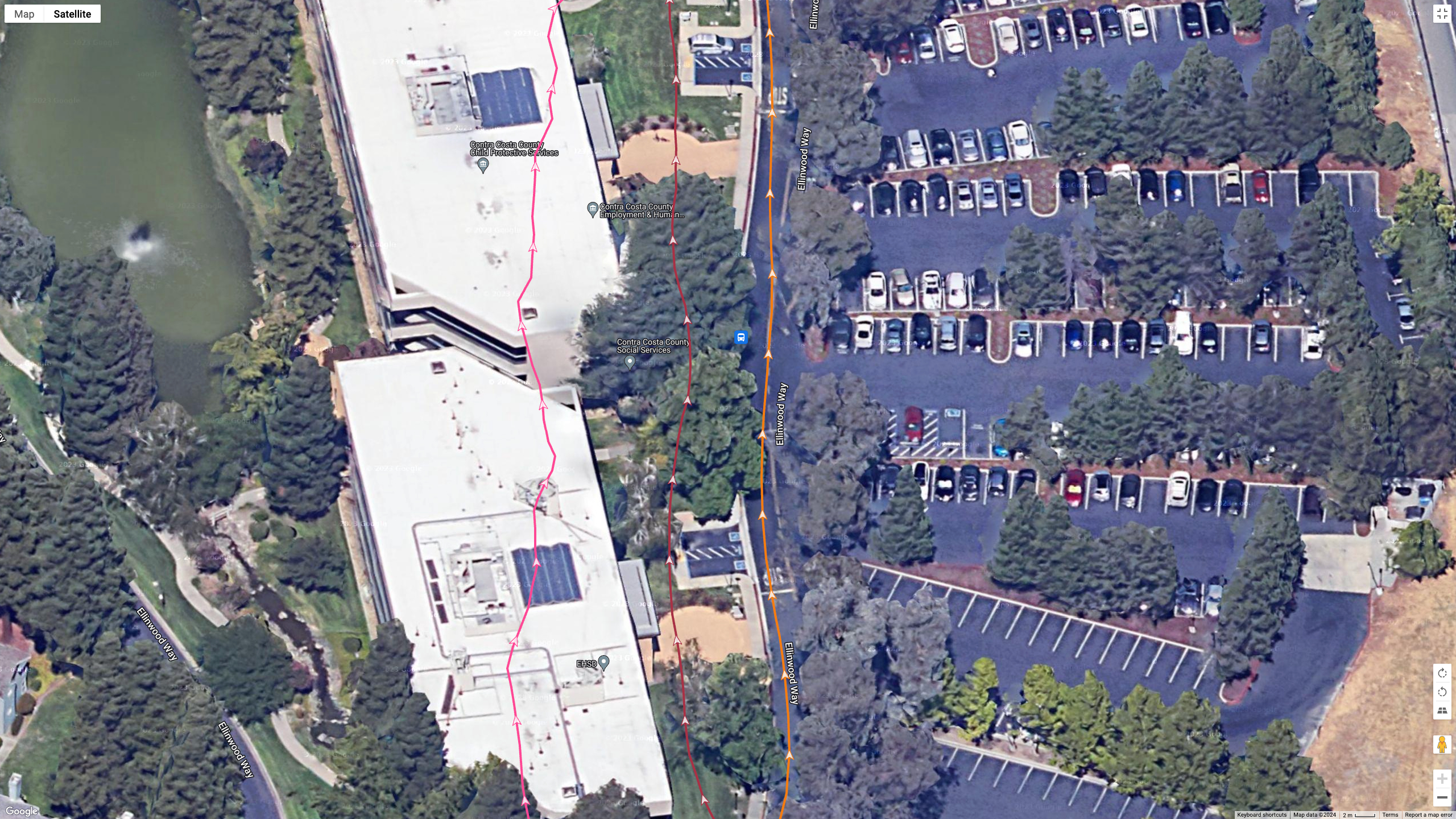
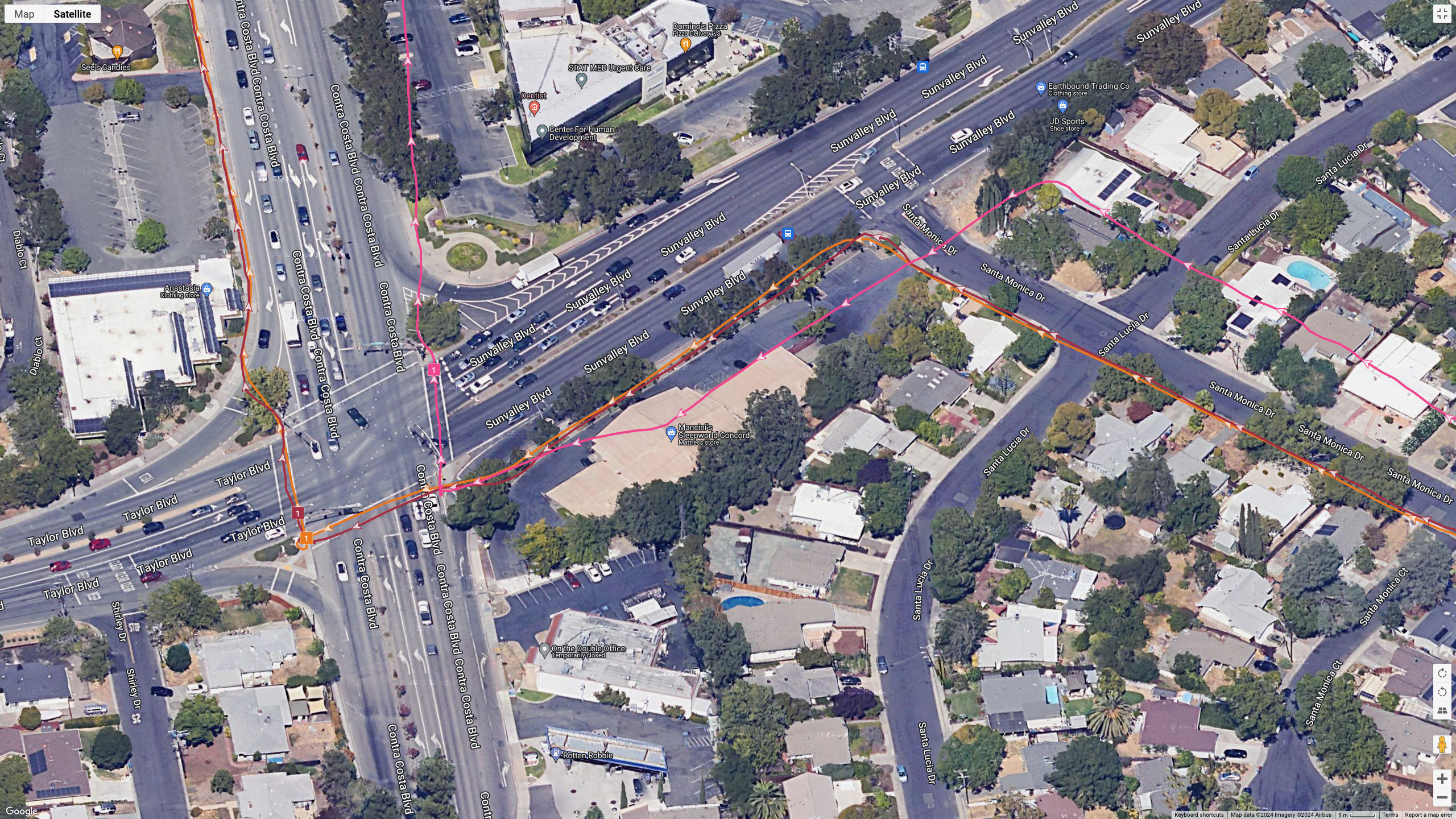
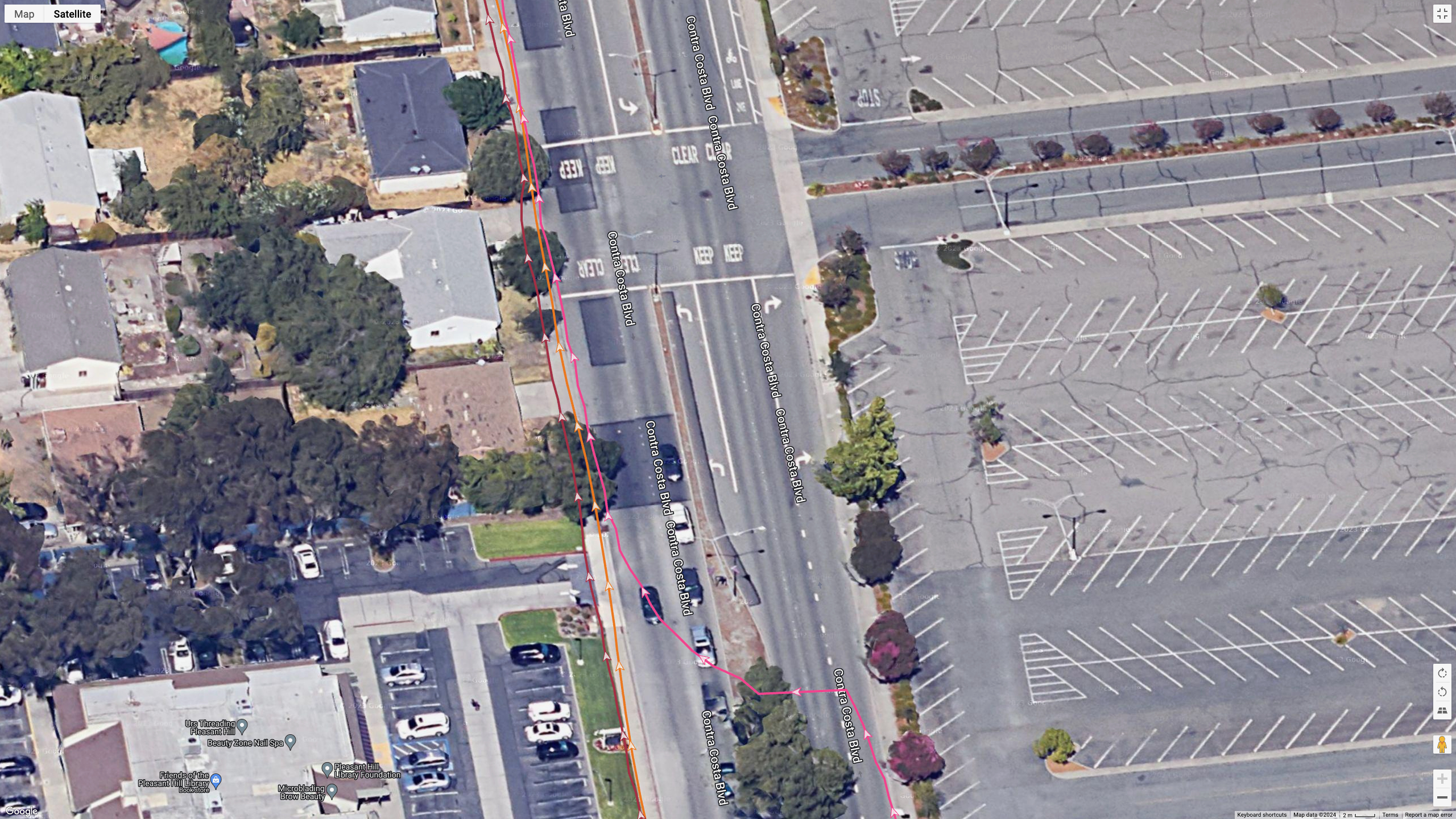
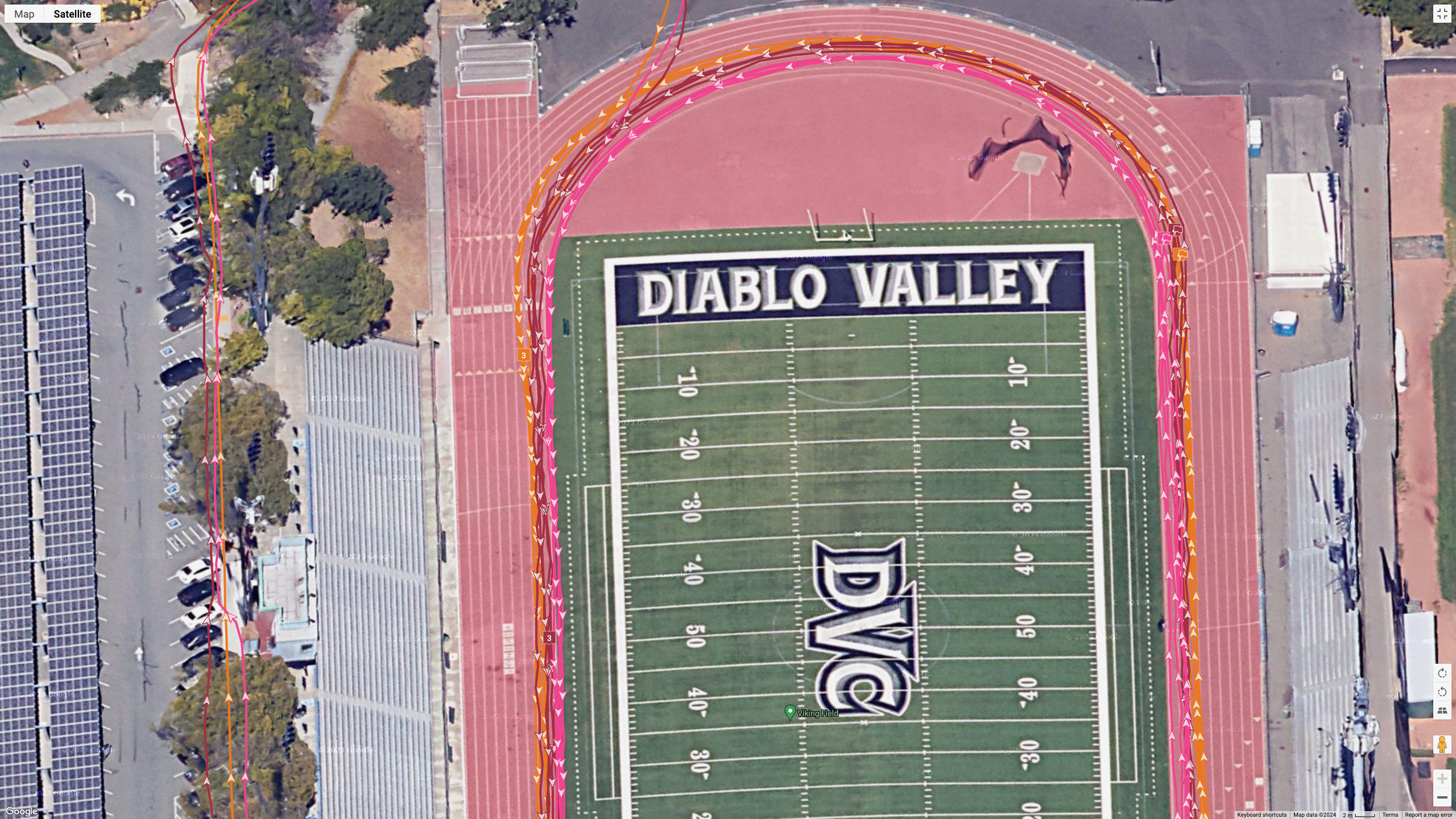
Something was definitely going on with the Polar Vantage V3's results here, despite the dual-frequency tracking. It had me crashing through buildings and houses like the Hulk for half of the run, then corrected itself and had me mostly on track for the rest of the run. It did make the results noticeably shorter than its rival watches.
Get the latest news from Android Central, your trusted companion in the world of Android
COROS and Garmin were closer to one another. Of the two, COROS stayed more accurate to my position early on, while Garmin was slightly off (though not as cartoonishly as Polar). As the run went on, both were either in sync or parallel, with the Forerunner (left wrist) and VERTIX (right wrist) matching their body positions.
As I closed in on the track, Garmin fell off slightly, having me run through cars in the parking lot — perhaps the trees above were to blame. On the track itself, all three watches were extremely consistent, though Garmin did the best job matching my second-lane position.
Moving on to my dedicated track workout in the first lane — I ran eight laps of 100m sprints followed by 100m jogs — these were the results:
- COROS VERTIX 2S: 2.01 miles, 7:27/mi pace, 353W power, 174 cadence
- Garmin Forerunner 965: 2.01 miles, 7:28/mi pace, 445W power, 170 cadence
- Polar Vantage V3: 2.02 miles, 7:24/mi pace, 457W, 176 cadence
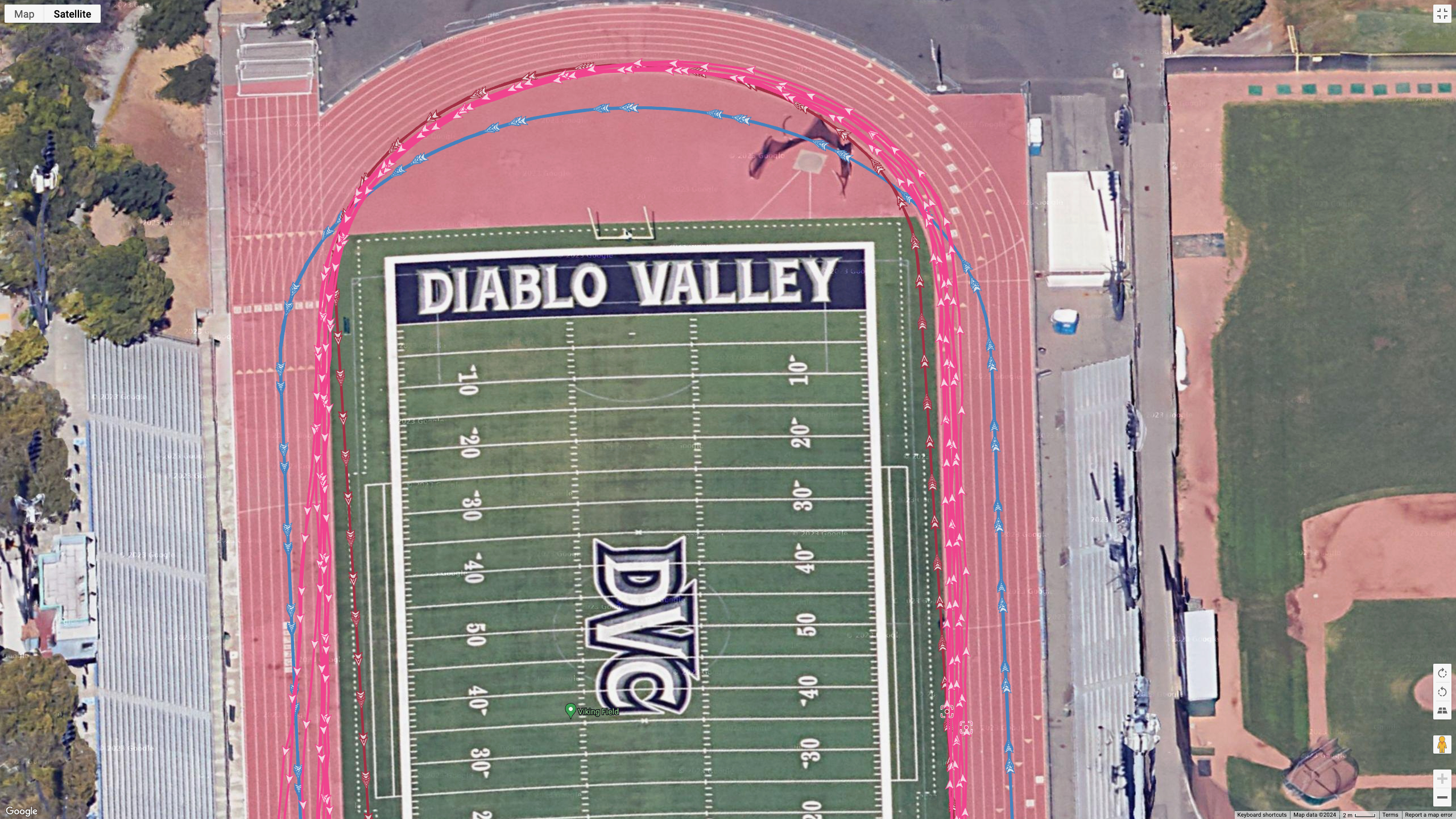
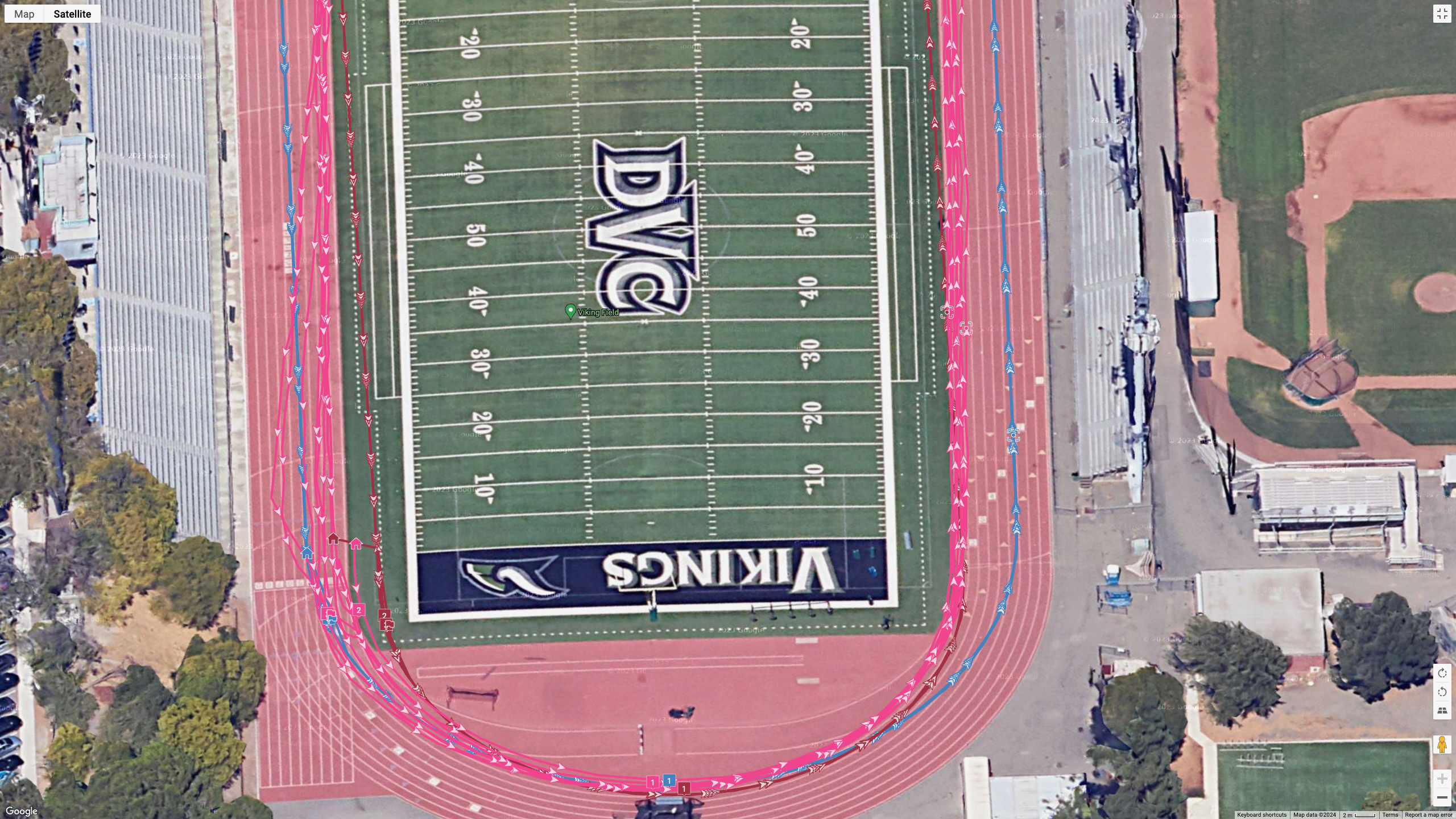
I've noticed in previous review tests that a watch's Track Run activity actively makes the GPS map worse than when you use a standard run activity. I'm not sure what to make of how Garmin (brown line) has me running on the grass for eight laps and COROS (blue line) has me cutting across the inner track, but both gave me the same distance.
Polar (pink line) technically did the best job of matching my one-lane placement, but it also had me weaving drunkenly between lanes on the closing stretch, so I can't praise it, either. I'm also unsure how Polar thinks I'm averaging 80–90 steps a minute while running, regardless of my pace... [Edit: Thanks to reader Jonah who informed me that Polar only tracks steps on one side, so I doubled my results above.]
Overall, no one wins here, but because a Track workout can detect when you return to a starting point, the lap results should be accurate across brands, no matter how wonky the lines look.
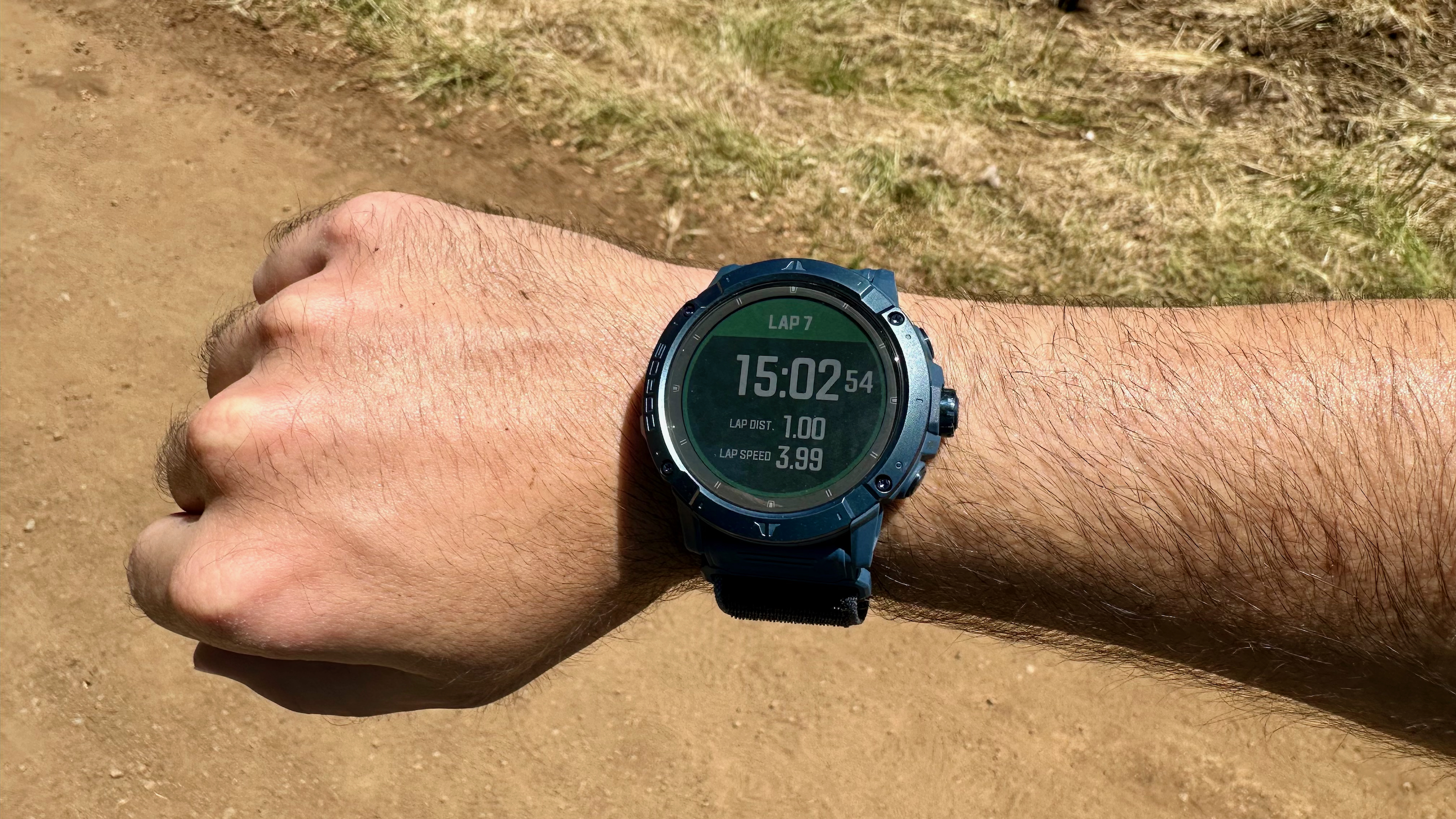
Lastly, since COROS is marketing the VERTIX 2S as an adventurer's watch, I wanted to test how it handled a hike, since I'm incapable of testing its cliff-climbing accuracy without dying. Here's the summary:
- COROS VERTIX 2S: 7.81 miles, 17:45/mi pace, 2,438 feet elevation gain
- Garmin Forerunner 965: 7.84 miles, 17:41/mi pace, 2,329 feet elevation gain
- Polar Vantage V3: 7.82 miles, 17:44/mi pace, 2,297 feet elevation gain
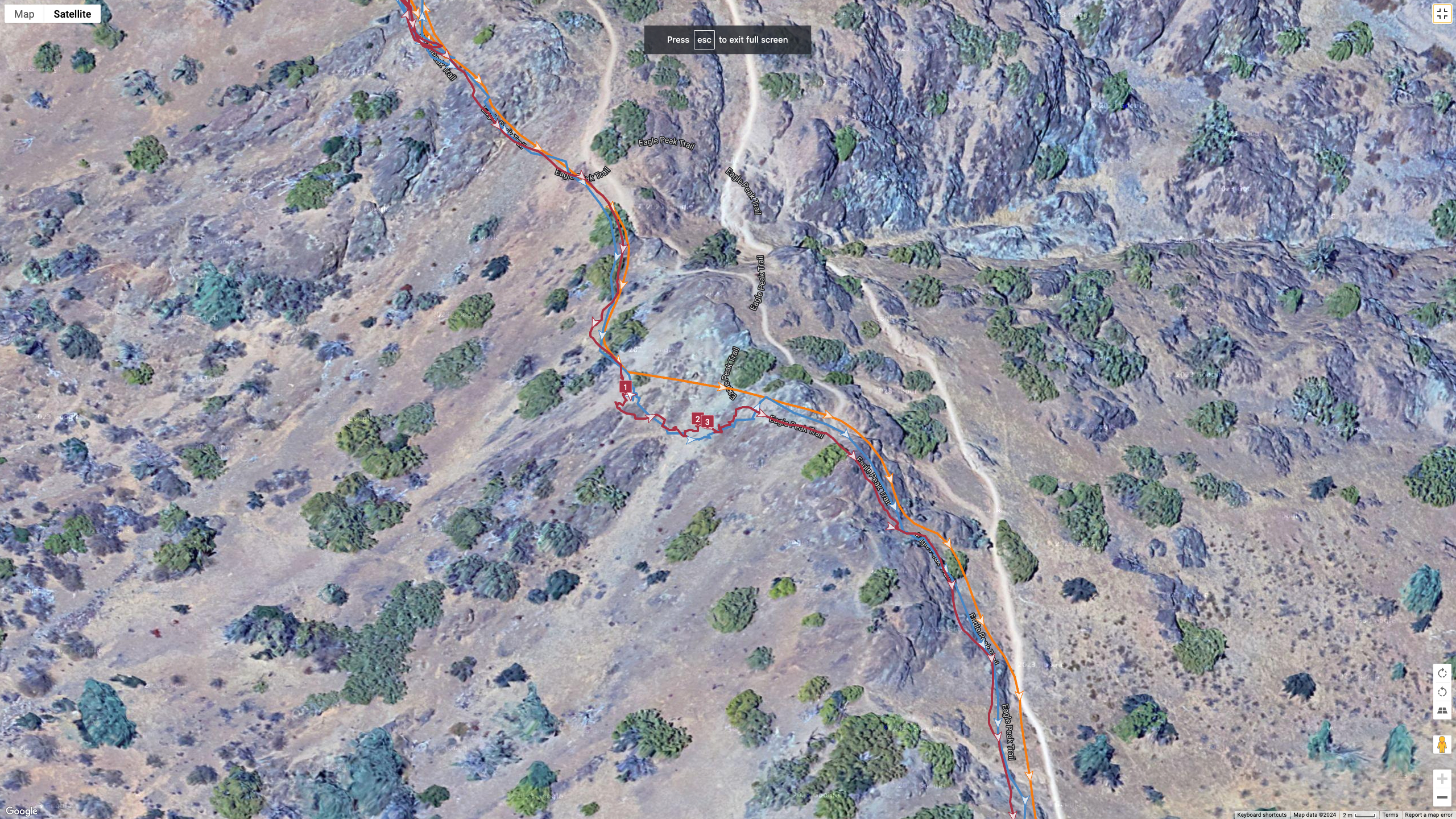
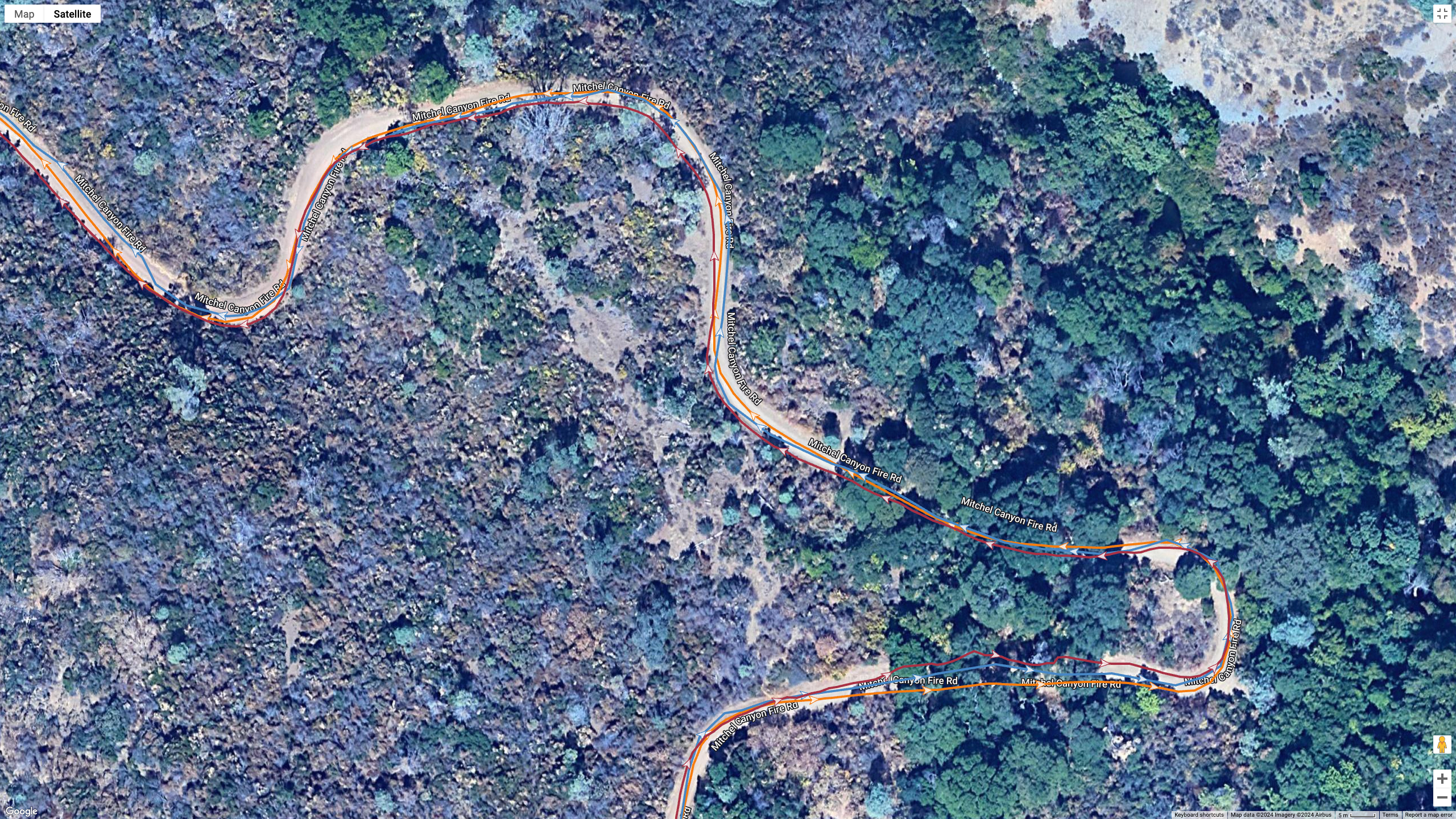
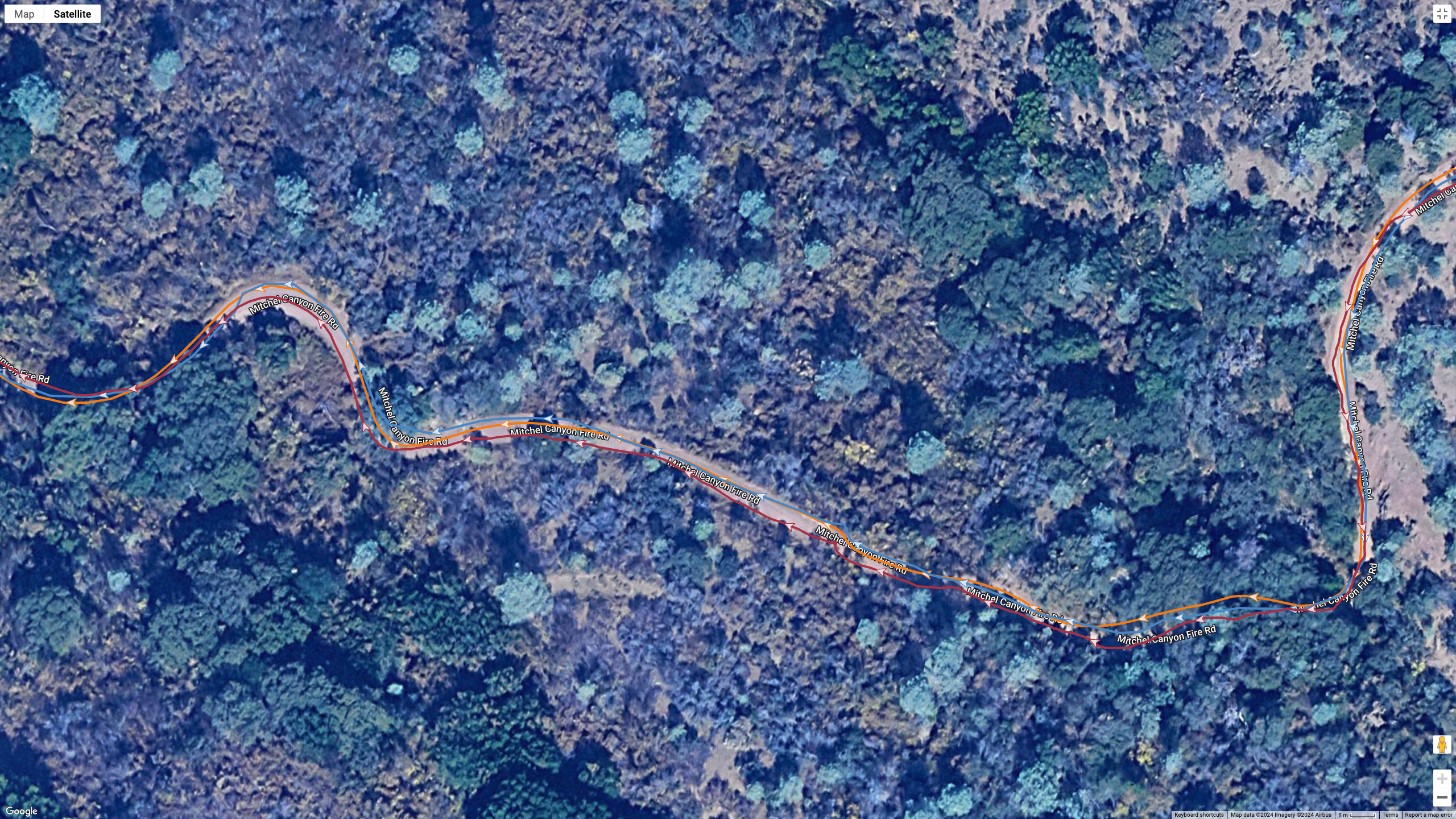
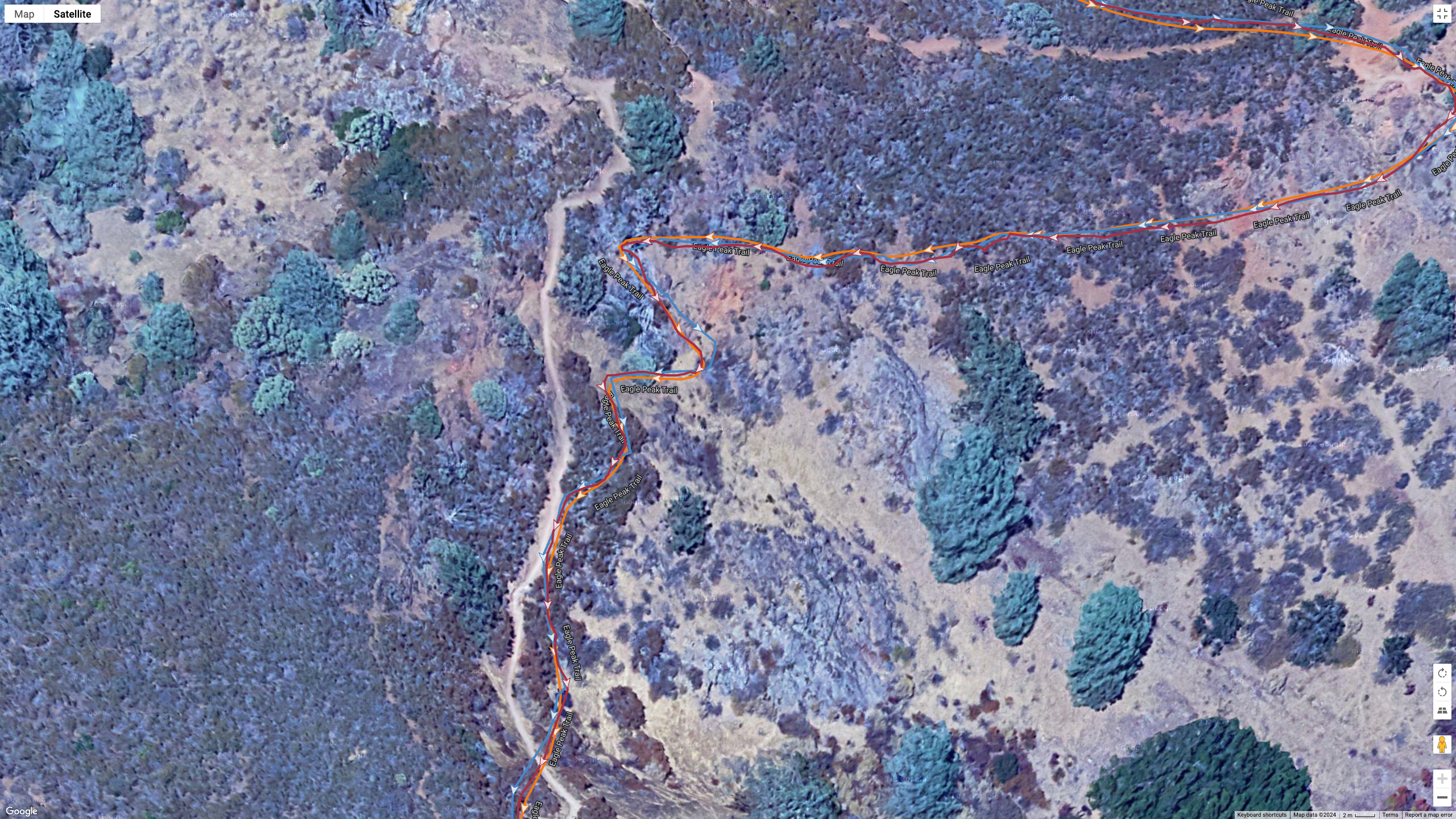
Distance-wise, all three watches were pretty comparable, which is encouraging! It was hard to judge accuracy by looking at a zoomed-out satellite map.
I did notice a couple of moments where COROS (orange) seemed to take a straight line to back-and-forth portions of the trail where Garmin (blue) and Polar (brown) kept accurate. Garmin seemed to throw me into the underbrush a couple of times, possibly thrown off by foliage. But I'm nitpicking and don't have much to complain about.
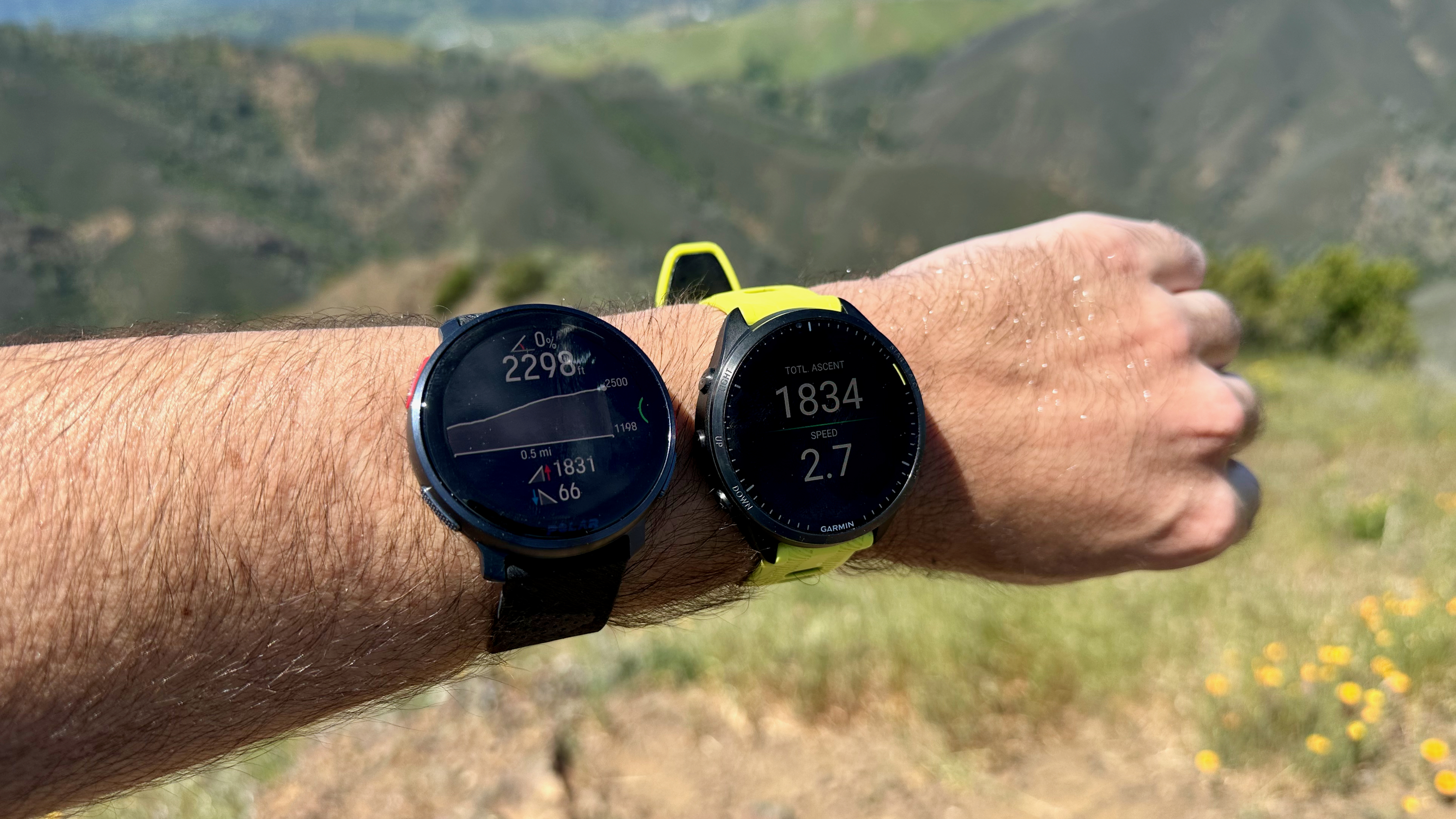
The biggest difference is in elevation gain. Alltrails estimates that my path's elevation gain is 2,208 feet, which suggests all three overestimated my elevation gain by a fair portion, with Polar exaggerating the least and COROS the furthest off.
The Forerunner 965 and COROS PACE 3 both did better in my previous elevation test, so I'm not certain if this is a case of Alltrails being off or all three watches "gaining" height when my GPS map drifts off slopes and back onto the path.
Coros vs. Garmin vs. Polar: Heart rate accuracy
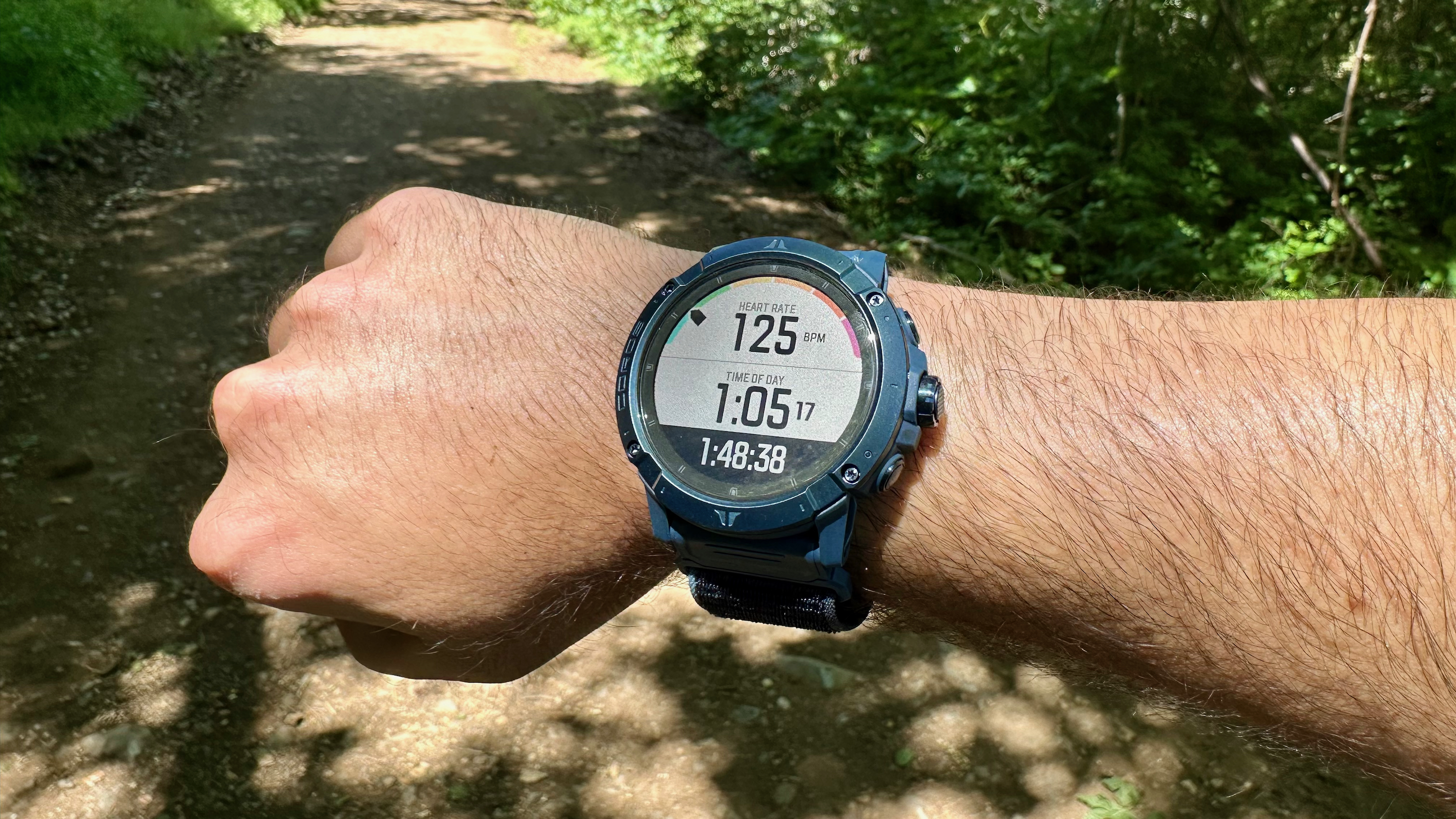
To test these watches' accuracy, I wore a Polar H10 chest strap during my initial two runs to see how they handled sudden changes in heart rate. Here's what I learned:
For the first 5K portion of my run, all three watches averaged 159 bpm, while the Polar H10 (purple) averaged 160 bpm. As you can see in the chart below, all three watches showed regular, minute changes in heart rate that closely matched one another, while Polar (red) had a few moments where its data spiked above the watches before falling back to the pack.
Frankly, I'm a bit skeptical I hit 170 bpm at a pedestrian pace so early in my run, so I'm looking askance at Polar's chest strap here. For the rest of the run, all of the watches more than matched it, which I'm happy about.
For the track workout, the Polar H10's heart rate chart got screwed up because of logistical reasons I won't bore you with, but I can at least share the averages: the H10 measured 172 bpm, while the Vantage V3 measured 173 bpm. The VERTIX 2S had 170 bpm, and the Forerunner 965 had 171 bpm.
All three watches seemingly had their issues during this workout. Garmin had deflated heart rate data during the first lap, COROS had deflated numbers during laps five and six, and Polar apparently doesn't track your heart rate when you pause a workout, keeping a flat result until you resume.
Overall, I'd say that Garmin and Polar did the best in overall accuracy, while COROS struggled slightly during hard sprints because the bulky design makes it likely to wobble on your wrist.
Then again, people aren't buying the VERTIX 2S for sprints but rather for activities with much more deliberate, slow-paced motion. And on other activities like hiking, the VERTIX 2S has done exceedingly well for heart rate data.
Analyzing the results
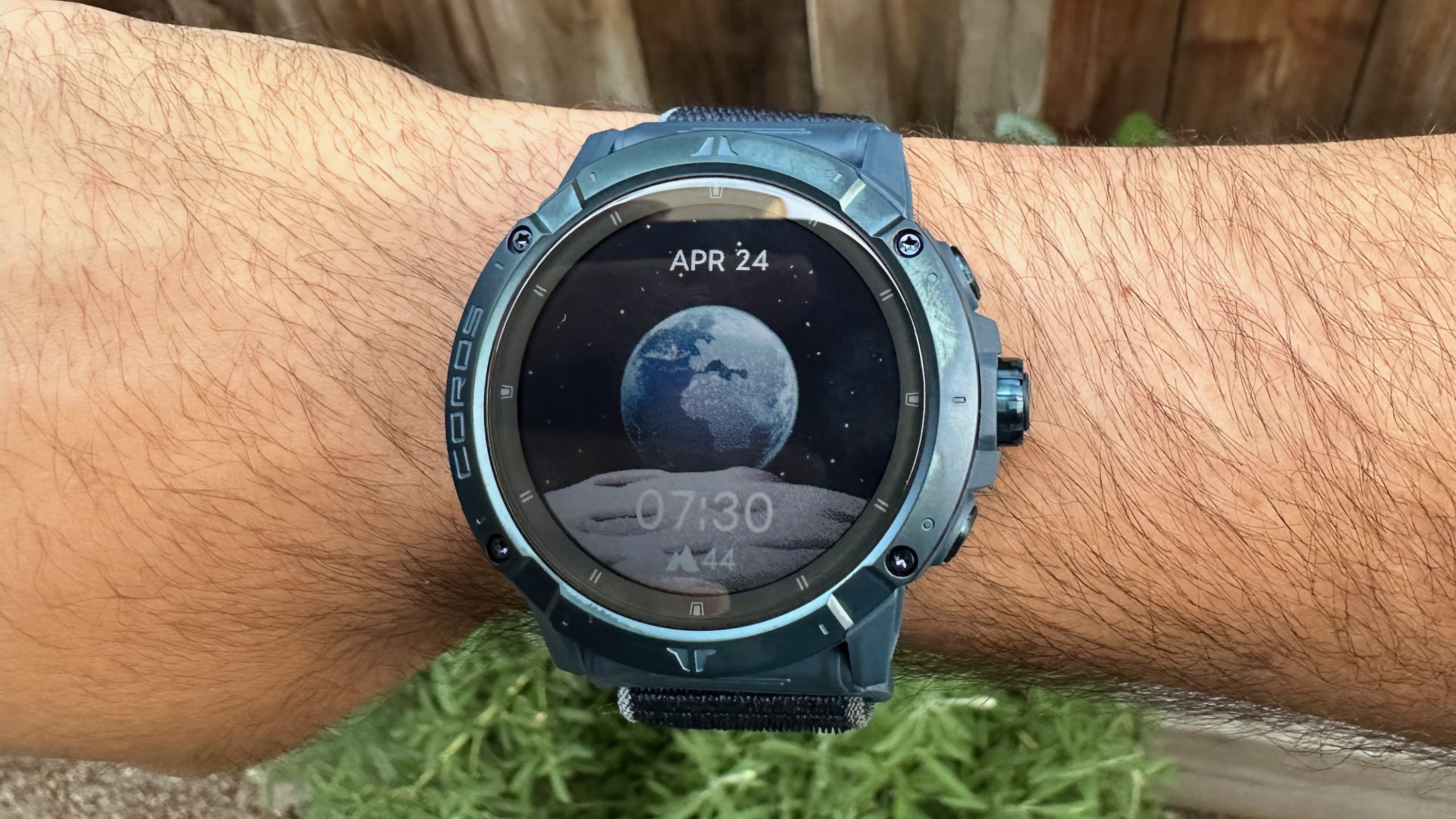
I can't tell you if the original VERTIX 2 was especially inaccurate, but thus far, I'm satisfied with the upgraded HR and dual-frequency GPS results for the VERTIX 2S.
For the general fitness comparison, the COROS VERTIX 2S performed best for GPS accuracy, the Garmin Forerunner 965 best (or least iffy) for heart rate, and the Polar Vantage V3 best for elevation accuracy. Still, none of the results were definitive, and I'd say they're all in the same ballpark.
That could change across more testing, in theory. But repeatedly wearing three smartwatches for workouts is an annoying hassle, so I'll focus more specifically on the COROS VERTIX 2S and Polar Vantage V3 in the coming days for their respective reviews to provide more context.

Michael is Android Central's resident expert on wearables and fitness. Before joining Android Central, he freelanced for years at Techradar, Wareable, Windows Central, and Digital Trends. Channeling his love of running, he established himself as an expert on fitness watches, testing and reviewing models from Garmin, Fitbit, Samsung, Apple, COROS, Polar, Amazfit, Suunto, and more.
You must confirm your public display name before commenting
Please logout and then login again, you will then be prompted to enter your display name.
